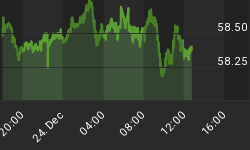Whether markets move up, down, or sideways, market breadth goes through short-term overbought/oversold cycles. During a very strong uptrend, the market will move sideways or slightly up during a market breadth overbought cycle, while the opposite is true for strong downtrending markets.
Gregory Moris' book Market Breadth Indicators is a good introductory guide to Breadth Indicators, which allow investors to keep track of such conditions, but by no means covers all of them.
On my blog I regularly update several proprietary indicators designed to keep track of overbought/oversold market breadth conditions, and will cover some of them in this and future articles.
Let's start with a weekly DJIA, QQQ, SPX overbought/oversold oscillator:
And follow-up with a couple of daily overbought/oversold breadth indicators:
Although all three indicators show a different sensibility to market breath changes, they all point to a short-term oversold condition. As a result, the expectation is for a sideways/up phase to follow (in the context of broken monthly, weekly and daily uptrends).
For short-term, one week price targets and areas of support/resistance, I'll turn again to daily channel analysis:

Coming soon: a new iPhone app that will help anybody, from novice to seasoned trader, make better investment decisions. Keep an eye on Twitter @citdates.




















